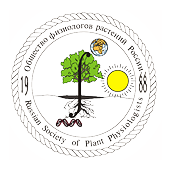Новости науки и практики // Декабрь 2016

Live cell imaging of asymmetric cell division in fertilized plant cells
Plant biologists have succeeded for the first time in visualizing how egg cells in plants divides unequally (asymmetric cell division) after being fertilized. The direction of this asymmetric cell division determines the body axis of flowering plants, i.e. the top part producing leaves and flowers, and the bottom part developing into roots. This mechanistic discovery on asymmetric cell division in plants provides insight into how flowering plants have evolved to form their body shape.
Results suggest that society can't simply rely on salt marshes to clean up nutrient pollution, but instead needs to do a better job at keeping nutrients out of the water in the first place.
Three rings stop cell division in plants
Arising from a collaboration between plant and animal biologists, and organic chemists at ITbM, Nagoya University, the group succeeded in developing a new compound, a triarylmethane that can rapidly inhibit cell division in plants. This compound was found to selectively inhibit cell division in plant cells with respect to animal cells. Having a reversible cell inhibiting property, this triarylmethane could be a potential candidate for developing new agrochemicals that can control plant growth.
Single enzyme controls 2 plant hormones
Scientists at Washington University in St. Louis have isolated the first enzyme shown to be capable of controlling the levels of two distinct plant hormones, involved both in normal growth and in responses to infections. Overexpressing the protein in plants reduced the levels of active hormones, leading to stunted plants. The researchers purified the protein and solved the structure, showing surprising similarities with enzymes that could only bind a single hormone.
https://www.eurekalert.org/
New grasses neutralize toxic pollution from bombs, explosives, and munitions
University of Washington and University of York researchers have developed the first transgenic grass species that can take up and destroy RDX -- a toxic compound that has been widely used in explosives since World War II and contaminates military bases, battlegrounds and some offsite drinking water wells.
https://www.eurekalert.org/
A wide range of microorganisms, including fungi and phytopathogenic bacteria, are capable of emitting volatile compounds which boost plant growth and flowering, and in accumulating up reserves as demonstrated in a study led by scientific researchers at Navarra's Institute of Agro biotechnology, in northern Spain, which is a mixed centre shared between Spain's National Research Council (CSIC), the Public University of Navarra, and the Regional Government of Navarra.
Published today in GigaScience, is the genome sequence of Ginkgo biloba, the oldest extant tree species. Researchers at BGI, Zheijiang University and Chinese Academy of Sciences carried out the work. Ginkgo is considered a 'living fossil,' as it evolved 270 million years ago and has changed little since. Given its unique position in the evolutionary tree of life and longevity as a species, the ginkgo genome will provide a resource investigating evolution and plant defenses.
https://www.eurekalert.org/
An international team of scientists is providing new insight into the process by which plants use light to split water and create oxygen. In experiments led by Berkeley Lab scientists, ultrafast X-ray lasers were able to capture atomic-scale images of a protein complex found in plants, algae, and cyanobacteria at room temperature.
https://www.eurekalert.org/
Researchers analyzed the rearrangements of endogenous ion accumulation, antioxidant systems and secondary metabolism in roots, stems and leaves of perennial ryegrass ( Lolium perenne L.) treated with exogenous Ca 2+ and H 2 O 2 under salinity.
http://www.nature.com/articles
Auxin flow-mediated competition between axillary buds to restore apical dominance
Researchers show apex decapitation activated competition for dominance in adjacent upper and lower axillary buds. A two-nodal-bud pea ( Pisum sativum L.) was used as a model system to monitor and assess auxin flow, auxin transport channels, and dormancy and initiation status of axillary buds.
http://www.nature.com/articles
Influence of leaf vein density and thickness on hydraulic conductance and photosynthesis in rice ( Oryza sativa L.) during water stress
To investigate this topic, the current study was conducted with two varieties under three PEG-induced water deficit stress (PEG-IWDS) levels. The results showed that PEG-IWDS significantly decreased A , stomatal conductance (g s ), and K plant in both cultivars, though the IR-64 strain showed more severe decreases than the Hanyou-3 strain.
http://www.nature.com/articles
The high-affinity metal Transporters NRAMP1 and IRT1 Team up to Take up Iron under Sufficient Metal Provision
Using a promoter swap-based strategy, we showed that root endodermis retains the ability to carry out high affinity Fe transport and furthermore might be important to high-affinity Mn uptake. We concluded that NRAMP1 plays a pivotal role in Fe transport by cooperating with IRT1 to take up Fe in roots under replete conditions, thus providing the first evidence for a low affinity Fe uptake system in plants.
http://www.nature.com/articles
The heterodimeric transcription factor complex ERF115–PAT1 grants regeneration competence
Researchers demonstrate the heterodimeric transcription factor complex ETHYLENE RESPONSE FACTOR115 (ERF115)–PHYTOCHROME A SIGNAL TRANSDUCTION1 (PAT1) sustains meristem function by promoting cell renewal after stem cell loss.
http://www.nature.com/articles
Evidence for nuclear interaction of a cytoskeleton protein (OsIFL) with metallothionein and its role in salinity stress tolerance
In the present study, researchers have functionally characterized a Saltol QTL localized cytoskeletal protein, intermediate filament like protein ( OsIFL ), of rice.
Identification of drought-responsive microRNAs and their targets in Ammopiptanthus mongolicus by using high-throughput sequencing
In this issue of Nature Plants, Abraham et al.1 combine profiling approaches and modelling to suggest that considerable reprogramming of the signal transduction cascade and downstream machinery underlying stomatal movement, alongside a diel redox shift, occurs in the CAM plant Agave americanus, when compared with the model C3 plant Arabidopsis thaliana.
http://www.nature.com/articles
Transcriptome analysis of Arabidopsis mutants suggests a crosstalk between ABA, ethylene and GSH against combined cold and osmotic stress
Our results suggested the role of ethylene and abscisic acid in inducing stress-responsive genes and proteins by activating glutathione biosynthesis to combat abiotic stress conditions in plant system.
http://www.nature.com/articles
Functional roles of Arabidopsis CKRC2/YUCCA8 gene and the involvement of PIF4 in the regulation of auxin biosynthesis by cytokinin
Our results show that, like other YUCs, CKRC2/YUC8 is a rate-limiting enzyme for catalyzing the conversion of indole-3-pyruvic acid (IPyA) to indole-3-acetic acid (IAA), acting downstream of CKRC1/TAA1 in the IPyA pathway. Here we show that the transcription of both CKRC1/TAA and CKRC2/YUC8 can be induced by CK and that the phytochrome-interacting factor 4 (PIF4) is required for this upregulation.
http://www.nature.com/articles
Hormone signalling: ABA has a breakdown
Abscisic acid (ABA) dynamically balances plant water use and availability. It is synthesized during water deficit and quickly catabolized into breakdown products previously thought to be largely inactive. New work demonstrates that phaseic acid, a major ABA catabolite, is a weak ABA receptor agonist with its own auxiliary role in water relations.
http://www.nature.com/articles
Arabidopsis seed germination speed is controlled by SNL histone deacetylase-binding factor-mediated regulation of AUX1
Our work identifies AUX1 as a link between histone acetylation mediated by SNL1 and SNL2, and radicle growth promoted by CYCD1;1 and CYCD4;1 during seed germination.
http://www.nature.com/articles
Pattern recognition: The MAPK connection
Mutants, phenotypes, in vitro biochemical assays and many other experiments all point to a stepwise phospho-signalling pathway from the receptor CERK1 to multiple MAPKs. The keystone molecular link is cytoplasmic kinase PBL27, phosphorylated by the receptor and released after chitin sensing, which in turn phosphorylates MAPKKK5, activating a full MAPK cascade.
http://www.nature.com/articles
Structured plant metabolomics for the simultaneous exploration of multiple factors
Researchers developed a novel approach that combines experimental design, untargeted metabolic profiling based on multiple chromatography systems and ionization modes, and multiblock data analysis, facilitating the systematic analysis of metabolic changes in plants caused by different factors acting at the same time. Using this method, target geraniol compounds produced in transgenic tobacco cell cultures were grouped into clusters based on their response to different factors.
http://www.nature.com/articles
Genome editing in maize directed by CRISPR–Cas9 ribonucleoprotein complexes
Researchers report biolistic delivery of pre-assembled Cas9–gRNA ribonucleoproteins into maize embryo cells and regeneration of plants with both mutated and edited alleles. Using this method of delivery, we also demonstrate DNA- and selectable marker-free gene mutagenesis in maize and recovery of plants with mutated alleles at high frequencies.
http://www.nature.com/articles
Новости
Новости науки и практики // Апрель 2024
Обзор научных новостей, опубликованных во всемирной паутине за последний месяцФосфорилирование плазматической мембраны H+-АТФазы Thr881 (треонин) участвует в светоиндуцированном открывании устьиц
Ученые из Университета Нагои (Nagoya University) и Института трансформирующих биомолекул (WPI-ITbM) обнаружили новый ...Научная конференция «Photosynthesis and Hydrogen Energy Research for Sustainability – 2024»
Приглашаем Вас принять участие в XII международной научной конференции


Объявления
Записей не найдено.



